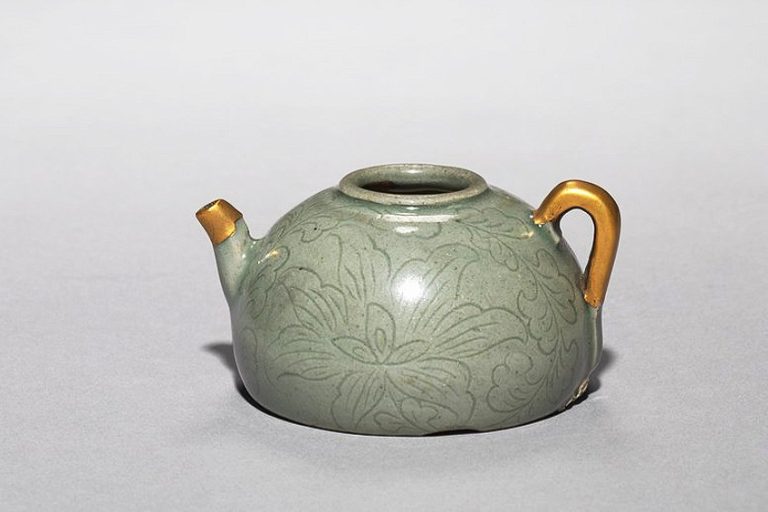Types of Paper – Explore the Diverse Types of Paper Available
Paper is something that we encounter and handle every day of our lives. It may be in the form of a book you are reading, books you are writing in at school or college, or something that you are printing out. There is a huge variety of paper types, with each one having its own unique use and purpose. So, let us now consider some of the more common types of paper and their uses below!
Table of Contents
- 1 What Is Paper?
- 2 Brief History of Paper
- 3 Types of Paper
- 3.1 Blotting Paper
- 3.2 Bond Paper
- 3.3 Cardstock Paper
- 3.4 Construction Paper
- 3.5 Crêpe Paper
- 3.6 Glossy Paper
- 3.7 Litmus Paper
- 3.8 Matte Paper
- 3.9 Newsprint
- 3.10 Parchment Paper
- 3.11 Printer Paper (Copy Paper)
- 3.12 Recycled Paper
- 3.13 Sandpaper
- 3.14 Tissue Paper
- 3.15 Tracing Paper
- 3.16 Wallpaper
- 3.17 Watercolor Paper
- 3.18 Wax Paper
- 4 Frequently Asked Questions
What Is Paper?
Paper is a very versatile product that is manufactured mainly from wood pulp derived from softwood coniferous trees like pine. The coniferous trees are usually fast-growing and are characterized as trees that have cones and needles. Paper is the formation of a felted and matted sheet, normally from cellulose fibers. Papermaking is done using the mechanical pulping process, where the wood is ground, and then using the chemical pulping process, the ground wood is mixed with water to remove what is known as lignin.
When the raw pulping process is complete, the fiber that remains is cleaned and then injected onto a flat wire screen.
The next stage requires the spreading of the fibers to form a large wide sheet. This wide sheet then passes through a series of driers and presses, where all the excess water is extracted. The sheet then passes through a calendering process to smooth the paper out. Before the paper is cut or wound onto reels, binding agents, pigments, and desired coatings are applied. Sometimes, the paper-making process is repeated more than once, to create recycled, used, shredded, and remade paper.

This is the modern process used to make paper, however, in ancient times, the process was slightly different. The fibrous layers in the stem of the plant were removed and laid down, side by side, and another set of fibers was laid down at right angles to the first layer, forming a sheet that was then dampened and pressed. This was allowed to dry, and the sap of the plant formed glue-like substances and cemented the layers of fibers together, forming the paper.
Brief History of Paper
Before the existence of paper, people used to communicate by using symbols and pictures that they carved into the bark of the trees. They also painted on cave walls, using natural pigments or the blood of animals. Papermaking can be traced back to AD 105, when a Chinese court official Ts’ai Lun created a sheet of paper by using mulberries, fishnets, hemp waste, and old rags. The art of papermaking traveled slowly westward until it reached Central Asia in AD 751, where the very first paper was made in Baghdad in AD 793. Then in the 14th century, paper mills started to open in Europe, with Spain as the first country to open a paper mill. The process then spread to various countries in Europe.
This brought a vast increase in the need for paper during the 18th century. However, the process in Europe for papermaking involved using old cotton rags and linen, which were the basic raw materials.
Because of this, it led to paper shortages and the paper mills were publicly asking for old cotton rags, and it was quite clear that the process needed to be investigated. This led to the development of papermaking using wood pulp and other vegetable pulps, doing away with the old rag process. This made it possible for large-scale production.

The first paper made using groundwood pulp was made in Germany in 1840. The soda pulp process was developed in England in 1852, and the sulfite pulping process was used in the United States in 1867. Modern engineering and inventions have transformed this once-ancient craft of papermaking into an extremely technical industry. However, the basic operation of papermaking remains the same until the present day.
Types of Paper
How many types of paper are there? If you could compile a full list of all the different types of paper that are in existence in the world today, it would be too long to fit into this article. It is also very difficult to classify all types of paper, as there are so many specialized uses for paper. There are plenty of types of paper that can meet the needs of your business, or you might be looking for a type of paper that will work for your art project. Maybe you are looking for paper that is good for your school project, or looking for a type of paper that you can use at home for printing or other DIY projects.
You may not be sure what size of paper to use, or whether it should have a plain or a coated finish.

There are so many different types of paper, and everyone has a unique purpose, use, and texture. It is impossible to cover all the different types of paper in this article, so we will be taking some of the more common paper types along with their properties and what they are used for.
Blotting Paper
Blotting paper is a soft, thin, very absorbent, and non-shiny type of paper that is generally used for removing any excess oil or liquid from various surfaces. It is manufactured from cotton, hemp, or flax, which gives it absorbent characteristics. The paper comes in different thicknesses, sizes, as well as grades, and is a product that can be found in every household.
Blotting paper is very versatile and can be used in a variety of applications.

It can be used to remove oil, sweat, and makeup from your skin, it is used in laboratories to remove liquid from samples for experiments, and helps to prevent smudging and bleeding of paint or ink on paper. Blotting paper is also used for arts and crafts to absorb excessive liquids from ink, paint, and markers, and can create unique patterns and textures in drawings and paintings.
Bond Paper
Bond paper is a high-quality, very versatile, and durable type of paper that has a luxurious feel with a refined finish. Many types of bond paper have a watermark that deters counterfeiting and helps in authenticating documents. Bond paper is also available in a variety of colors including ivory, white, and gray, and is environmentally friendly.
Bond paper is often used for professional and official documents, and can be found in government offices, businesses, and educational institutions.

It is used by people who want to produce high-quality, professional-looking documents. Bond paper is used for resumes and cover letters, legal documents and agreements, certificates and diplomas, personalized stationery, and is also used for arts and crafts.
Cardstock Paper
Cardstock paper is high-quality paper and is thicker and a lot more durable than your regular type of paper. However, it is thinner than cardboard and comes in a wide range of finishes, which include gloss, matte, and textured. Cardstock comes in many colors, from black and white, to pastels, and bright colors. You can print on them using home printers, such as a laser or inkjet printer.
Cardstock is a durable and versatile type of paper and is often used in professional and creative projects. Because of its thickness and durability, it is ideal for projects that need a sturdy type of material.

Cardstock paper can be used for greeting cards and scrapbooking but is not suitable for projects that require folding. Cardstock paper is a perfect choice for business cards, wedding invitations, birthday invitations, greeting cards, certificates, and award certificates, where durability, colors, and finishes are needed to provide a professional look. So, it is ideal for customized and personalized projects.
Construction Paper
Construction paper is durable, with a wide range of colors, it is cost-effective, readily available, and a very versatile paper, making it popular for many arts and crafts projects. It is perfect for the hobbyist and for both adults as well as children. This paper is more durable and thicker than ordinary paper and is easy to fold and cut. Construction paper is acid-free and will not fade or yellow over time.
Construction paper is ideal for drawing and painting and is compatible with watercolors, markers, and pencils.

It is easy to fold and cut and is perfect for origami projects like creating animals, flowers, stars, boats, and much more. Construction paper is also used to cover or decorate books, make greeting cards, create collages, as well as create decorations like streamers, and piñatas for parties and special events.
Crêpe Paper
Crêpe paper is manufactured from wood cellulose and is tissue paper that has been coated with sizing. It is durable, flexible, stretches easily, and has a very high breaking strength. The paper also comes in unique textures and colors that can create unforgettable designs and is supplied in single sheets or rolls. Crêpe paper is used as streamers for parties and comes in thin strips in a long roll. It can be used for other decorations and is perfect for creating paper flowers.
Children love to work with it and create craft projects, and it can also be used for packaging materials.
Glossy Paper
Glossy paper, also known as coated paper, is a very high-quality and versatile type of paper that has an exceptionally smooth and shiny surface. The surface has been coated with a glossy finish that gives it a vibrant and reflective look, allowing the details and colors to appear sharper and more vibrant. Glossy paper is a heavy and sturdy paper that prevents it from bending and curling. It is also a durable paper that is resistant to moisture and fading, and some types come with additional features. These features can include things like a water-resistant coating and double-sided printing.
This type of paper is also compatible with laser and inkjet printers, but the use of appropriate settings is vital to avoid bleeding and smudging.
Glossy paper is perfect for printing high-quality photographs because of its ability to show sharp details and vivid colors. The paper is also often used for printing brochures, flyers, and other forms of marketing materials. It is also used to create many diverse types of business documents like proposals, presentations, and reports.

Glossy paper is an ideal choice for several arts and crafts projects like scrapbooking, greeting cards, and many other paper-based projects. You can also use it for signage, for example, posters and banners making them more attractive. It can also be ideal for creating art prints of paintings and photographs.
Litmus Paper
Litmus paper can also be described as a filter paper, which is treated with a type of dye that changes color when it encounters other particular substances. Its main purpose is to establish if a certain solution is alkaline or acidic. Red litmus paper shows up blue if the solution is alkaline, and blue litmus paper shows up red if acidic.
Matte Paper
Matte paper is a very versatile, easy-to-use, and high-quality paper. This type of paper is extremely popular for a variety of printing applications. It has a non-reflective dull surface finish with a smooth touch and is finished with a fine white coating that boosts contrast and makes the ink dry quicker. Matte paper is exceptionally durable and is resistant to smudging, water damage, and fading. It can also be used with laser and inkjet printers and is perfect for printing hefty text documents.
The paper is also suitable for printing images that have soft muted colors, giving it a more natural look.

Matte paper is used for printing company leaflets, books, brochures, manuals, professional documents, proposals, and presentations. Matte paper is also used to print art reproductions, photographs, posters, greeting cards, invitations, labels, and stickers. The non-reflective finish makes it ideal for scrapbooking projects.
Newsprint
Newsprint is manufactured from groundwood pulp and is very thin and cheap to produce. For this reason, it is non-durable, has a low tear resistance, and is prone to yellowing. Newsprint is mainly manufactured from recycled material and is biodegradable, making it comparatively eco-friendly. Newsprint is ideal for use on offset printing presses that can produce large volumes of newspapers at very high speeds and is not suitable for fine details and good-quality prints.
Newsprint is used to make newspapers, comic books, and magazines, and because it is lightweight, it is used for packaging and wrapping.

Newsprint is a type of paper that is perfect for many art and craft projects, such as papier Mache, drawing, and origami. Because of its availability and low cost, it is perfect for small pet’s bedding, for example, guinea pigs and hamsters. Newsprint is perfect for use when cleaning grime and dirt off windows, mirrors, and other glass surfaces because of its absorbency.
Parchment Paper
Parchment paper is made from chemical wood pulp or cotton fiber and is coated with silicone to make it grease-proof, heat-resistant, moisture-resistant, and nonstick. It is also odorless, tasteless, and food safe. Parchment paper can be unbleached brown, or white, which has been chemically treated to remove the natural color of the paper.
The paper is disposable, making cleanup very convenient and easy.

Parchment paper is a versatile type of paper, making it an extremely helpful item in the kitchen where it can be used for baking, roasting, steaming, microwaving, and all kinds of cooking. It can also be used for lining baking sheets, wrapping food, rolling dough, piping icing, and much more.
Printer Paper (Copy Paper)
Copy paper is thin and lightweight and is regarded as a low-quality paper. Most copy paper is acid-free and can easily absorb the ink. However, the copy paper that has a matte finish, allows the ink to dry quicker. Copy paper is a type of paper that is used to print various information for business, education, entertainment, and awareness purposes. Copy paper is commonly used in our everyday lives, in schools, and offices, and can be found in most homes.
It can be used in any type of printer like inkjet printers, laser printers, and solid ink printers, and is also ideal for use in photocopying machines.
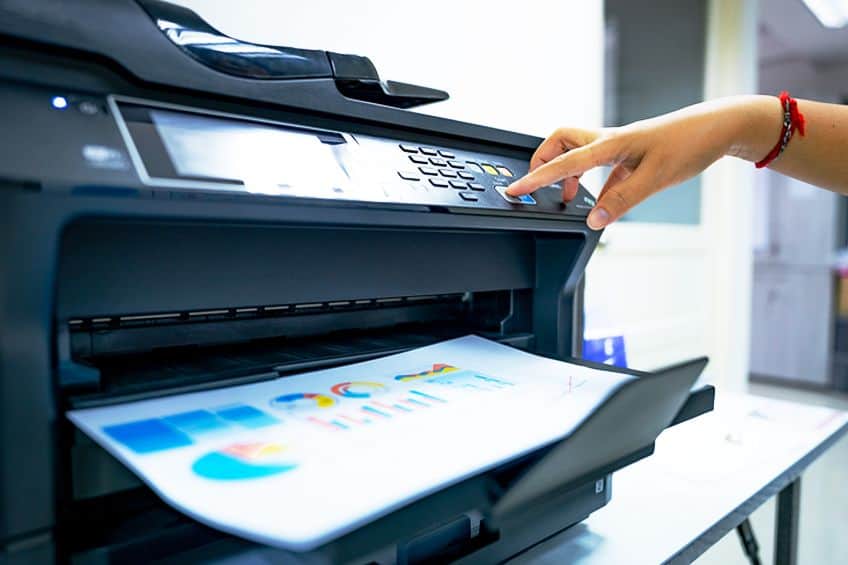
Copy paper is also used for printing flyers, and brochures, printing for promotions, and special events, printing on letterheads and other office stationery, sketching out designs, jotting down notes, or various other activities. For example, it can also be used for DIY projects like origami, paper flowers, and much more.
Recycled Paper
Recycled paper is manufactured mainly from recycled wastepaper that comes from cutting and slitting operations at the paper mills. However, it can also come from the guillotine and cutting operations at the printers, waste collected from offices, newspaper waste, and other industrial waste. The recycled paper does not have to be a dull brown color but can come in a variety of colors and weights.
The paper can be recycled several times over until the fibers become too short for reuse.

Recycled paper can be used for a multitude of assorted products, such as memo paper, all forms of documents, coffee filters, egg cartons, napkins, magazines, newspapers, paper plates and cups, paper towels, tissues, toilet paper, cardboard, paper bags, pizza boxes, packaging materials, and a whole lot more.
Sandpaper
Sandpaper, or abrasive paper, consists of abrasive minerals such as garnet, silicon carbide, emery, or aluminum oxide, which are glued onto a cloth or paper backing. These minerals have sharp edges or points that give the paper its cutting edge. Sandpaper comes in various grit sizes depending on what you want to use it for. This can range from very fine, fine, medium, or coarse.
The larger number like 1200-grit size denotes an exceptionally fine sandpaper, while the smaller number like 50 denotes coarse sandpaper.
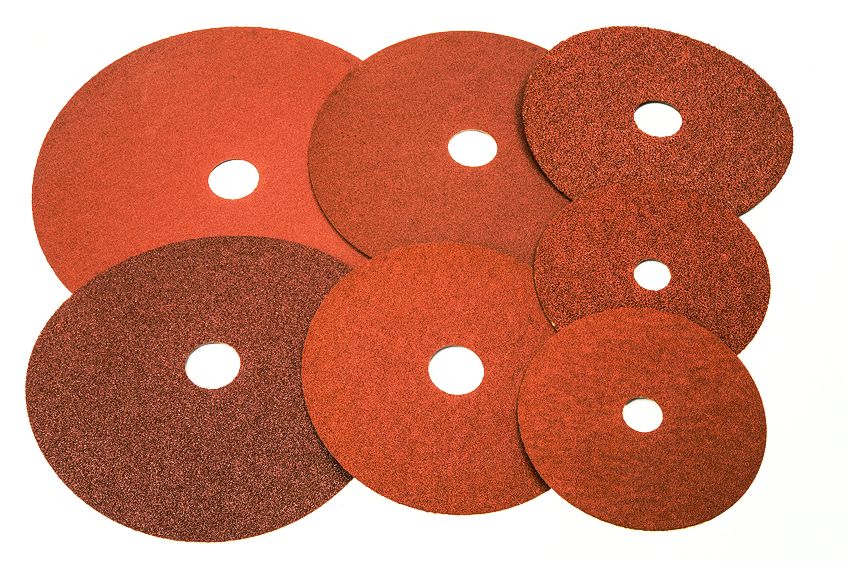
Sandpaper can be supplied in single sheets, belt form, drum form, or discs for sanding machines. The main purpose of sandpaper is to polish, smooth, or remove coatings of paint or other products on various surfaces like wood, metal, plastic, and even glass.
Tissue Paper
Tissue paper is a very delicate and lightweight type of paper and has several uses and purposes. Because of its absorbency and soft texture, it is ideal for wiping on sensitive skin. It is also very cost-effective and practical, making it ideal for everyday use, crafting, and decorating. Tissue is also used to make crêpe paper, facial tissues, and gift tissue paper.
Tissue paper is manufactured mainly from recycled materials, so it is eco-friendly and biodegradable.
Tracing Paper
Tracing paper is manufactured from wood pulp and synthetic fibers and is a translucent thin paper that is very versatile, making it ideal for creative as well as technical applications. Tracing paper can come in varied opacities depending on your needs and can also be printed on and then used on any opaque paper. Tracing paper is very lightweight and has a smooth surface, making it suitable for sketching, drawing, and writing.
It is also very transparent, making it perfect for transferring designs or images onto other surfaces.
It is also compatible with several writing and drawing mediums like ink, markers, pens, and pencils. Tracing paper is often used by architects and engineers to create blueprints of technical drawings and designs. The paper is also immensely popular with designers and artists for transferring designs onto other surfaces and creating overlays in graphic design.

Tracing paper is also used for crafting to create templates and is used for drawing and cutting out various shapes or transferring drawings onto varied materials like wood or fabric. It is also used often in calligraphy to trace and transfer designs and lettering. Young children can use it to help with teaching them how to draw and write by practicing shapes and letters or copying and tracing figures.
Wallpaper
Wallpaper is a type of wall covering found in many offices and homes and is manufactured from long sheets of paper that come in roll form. The paper is printed or painted with assorted designs. In early times, the designs featured mainly landscapes, but nowadays people prefer simple and minimalistic patterns and designs. Making use of different manufacturing processes, such as gravure printing, surface printing, and rotary printing, results in wallpaper having vivid colors, textures, and patterns.
In our modern world today, wallpaper has also become a digital experience that can provide more detailed wallpaper prints.
Watercolor Paper
Watercolor paper is made to be used with watercolor paints and is highly absorbent, allowing the paint to soak into the paper creating a unique appearance and texture. It is a thick paper, which prevents the paper from curling and buckling. Watercolor paper is also acid-free, ensuring archival quality, and will not fade or yellow over time.
Watercolor paper is a very high-quality paper made from 100 percent cotton, making it more absorbent and durable than if it was made from wood pulp. The texture is what makes it ideal for watercolor artwork.
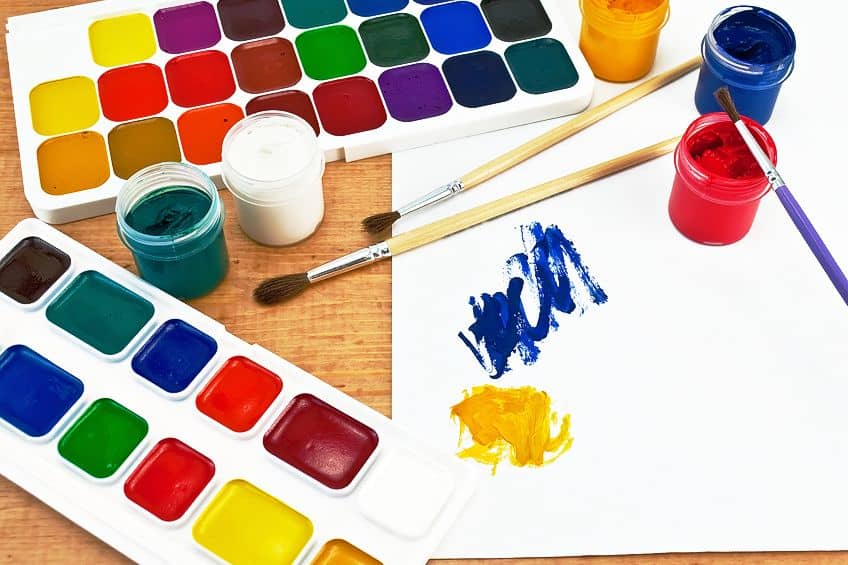
Watercolor paper is essentially created for watercolor paintings and can also be used with colored or graphite pencils, ink, or pastels. It is also used for some printing techniques, such as lithography, engraving, and etching. Also, it can be used for calligraphy projects, creating greeting cards, bookmarks, and origami projects.
Wax Paper
Wax paper is like parchment paper in that it is a coated paper and is coated with a layer of food-safe paraffin wax, making it food-safe, moisture-proof, grease-proof, and nonstick. However, it is not heat-resistant, but it is cheaper than parchment paper, and must never be placed in the oven. Wax paper is used in the kitchen for rolling out dough, it can be used as a funnel, or for piping, wrapping leftovers or sandwiches, lining drawers, cabinets, and bins, keeping cheese and ice cream fresh, polishing fixtures and hardware, and much more.
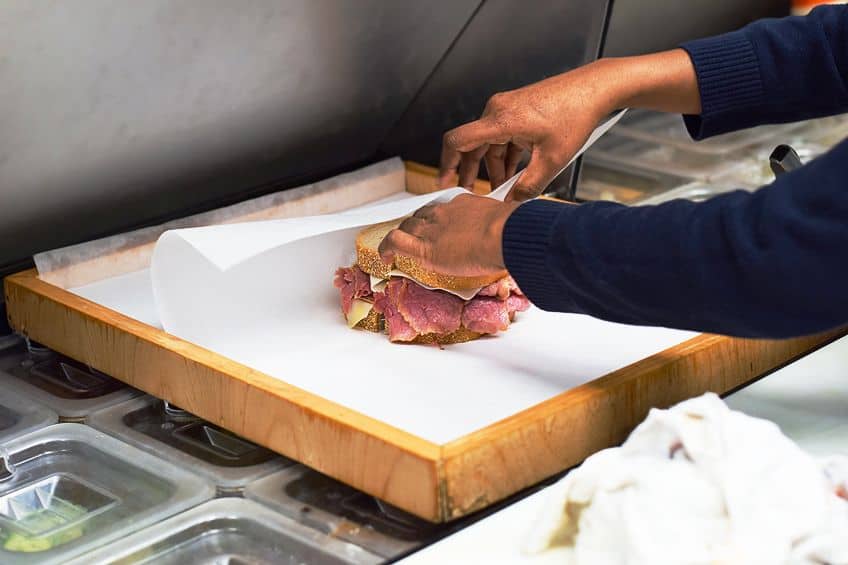
In this article, we have only dealt with a few of the many diverse types of paper that are available. There are many more paper types, such as vellum paper, craft paper, tobacco paper, rice paper, and many more. The paper industry is one of the world’s largest industries, and unfortunately, most of the paper that is manufactured use wood pulp, which is fast depleting the world’s tree population and poses a threat to humankind in the future. So, try to use paper wisely to help conserve our natural resources.
Frequently Asked Questions
What Is Paper?
Paper is a flat sheet of material that is suitable for writing and has been made from processed plant cellulose fibers. Most of the pulp that has been processed comes from wood, but there are other plant sources like cotton, hemp, sugar cane bagasse, esparto grass, and bamboo.
How Many Types of Paper Are There?
Trying to cover all types of paper is impossible, as there are hundreds of different types of paper available, and each one has specific uses and properties. Some of the most common types are bond paper, glossy paper, newsprint, parchment paper, watercolor paper, tracing paper, construction paper, and copy paper.
Is There a Difference Between Virgin Paper and Recycled Paper?
Recycled paper is made from paper waste, while virgin paper is made from fresh wood pulp. Recycled paper is environmentally friendly, helping to reduce landfill waste and conserve natural resources.
In 2005, Charlene completed her Wellness Diplomas in Therapeutic Aromatherapy and Reflexology from the International School of Reflexology and Meridian Therapy. She worked for a company offering corporate wellness programs for a couple of years, before opening up her own therapy practice. It was in 2015 that a friend, who was a digital marketer, asked her to join her company as a content creator, and this is where she found her excitement for writing.
Since joining the content writing world, she has gained a lot of experience over the years writing on a diverse selection of topics, from beauty, health, wellness, travel, and more. Due to various circumstances, she had to close her therapy practice and is now a full-time freelance writer. Being a creative person, she could not pass up the opportunity to contribute to the Art in Context team, where is was in her element, writing about a variety of art and craft topics. Contributing articles for over three years now, her knowledge in this area has grown, and she has gotten to explore her creativity and improve her research and writing skills.
Charlene Lewis has been working for artincontext.org since the relaunch in 2020. She is an experienced writer and mainly focuses on the topics of color theory, painting and drawing.
Learn more about Charlene Lewis and the Art in Context Team.
Cite this Article
Charlene, Lewis, “Types of Paper – Explore the Diverse Types of Paper Available.” Art in Context. September 26, 2023. URL: https://artincontext.org/types-of-paper/
Lewis, C. (2023, 26 September). Types of Paper – Explore the Diverse Types of Paper Available. Art in Context. https://artincontext.org/types-of-paper/
Lewis, Charlene. “Types of Paper – Explore the Diverse Types of Paper Available.” Art in Context, September 26, 2023. https://artincontext.org/types-of-paper/.





